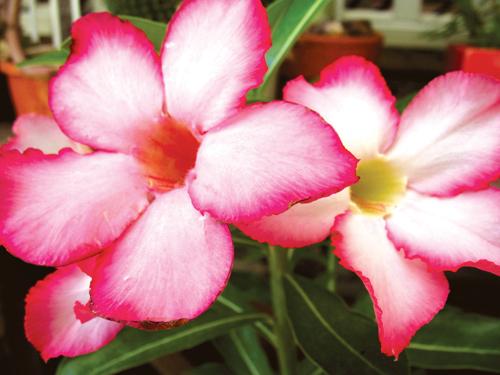Phuket Gardening: Sol o sombra? A seat in the sun

PHUKET: If you go to the huge, intimidating amphitheater that is a Spanish bullring to witness a series of corridas, you may be asked at the ticket office if you want “sol” or “sombra?”
And the reason? The seats in the shade (sombra) are more expensive, because there you are shielded from the fierce rays of the Iberian sun. “Sol y sombra” (sun and shade) is a similar expression used to denote seats that start in the afternoon sun and conclude in the evening shade.
The same general principle applies to other sporting events played out in torrid climes. If you watch little-league baseball in the southern United States, you can choose to save money by watching events from the bleachers, an apt name coined long ago for those unroofed and inexpensive areas of the stadium exposed to the bleaching effect of constant sunshine.
Sometimes, of course, people actually prefer the sun on their skin, whatever the potential hazards from ultra-violet rays, and whatever the cost – both to health and to wallet. To test the truth of that observation, just go to Kata or Karon beach any day and see the palefaces of northern Europe absorbing as much sol, as their exposed bodies will take.
Judging by the amount of burnt and reddened flesh, these sun-worshipers are altogether too ardent in their reverence.
Plants have the same polarized inclinations. In the wild, and by an eon-long process of adaptation, plants will eventually settle in habitats that are appropriate for their needs.
But as a gardener, you have to make an instant choice for them. And in the tropics, an awareness of these needs is crucial. Some books on tropical plants help the decision-making by using symbols such as a diagrammatic full sun, half sun or cloud to indicate preferred conditions. Helpful to the uninitiated…
In essence, tropical plants, like spectators at a bullfight, fall into one of these three categories. Take, for example, shrubs or perennials that do best in full sun. Often plants from dry or even arid regions, require less moisture and more light than most of their brethren. Adeniums, for example, will produce more flowers in full sun: so too allamandas,codiaeums, ixoras, milkweeds, euphorbias and tabernaemontanas.
Most sun-loving plants have strong, glossy, even leathery leaves, which lose little in the way of moisture through evaporation.
Again, some foliage plants will not produce their full range of hues without adequate sunshine. By way of illustration, consider the following example. I recently bought two newish cordyline cultivars – single stemmed, usually crimson leaved or edgedperennials that always look good when strategically placed among greener plants. Exposed to the full tropic glare in the plant nursery, they had brilliant magenta leaves, which were suffused with vivid tints of orange and yellow where the sun had caught them.
Back in my garden and put in filtered shade, most of these dramatic tints were soon replaced by a dull khaki-red. A clear case for full “sol“.
However, and because of the sheer power of the tropic sun, most plants prefer filtered shade, some respite from the heat of noon. Indeed, many plants, and especially broad-leaved ones, will, like palefaces, scorch when exposed to full sun.
This particularly applies to denizens of the forest understorey, but unwise positioning can also affect many garden shrubs that you might think of as impregnable. Of course, inadequate supplies of water for the roots will usually exacerbate the problem.
So sol y sombra, both sun and shade, is the answer for most tropical plants. If in doubt, go for a combination of both, for filtered shade, for a via media (Latin for the middle of the road). You may not satisfy all your customers, but then, what’s new…
Tip of the week: More pest control
Other pest control methods include pruning and destroying branches, canes and other plant tissues that show evidence of actively developing problems such as leaf borers, scale insects, molds, powdery mildew and other fungal infections. Sometimes all that is required to eradicate an infestation of small insects such as mites, aphids and thrips is a strong jet of water, maybe with detergent added to the solution.
Rotate the location of plants in your garden from season to season. This is particularly helpful for combating plant diseases that survive in the soil. Get to recognize and encourage so-called “good bugs”: for example, ladybirds (which feed on aphids), assassin bugs, hoverflies (whose larvae also feed on greenfly), spiders, mantids, lacewings and hunting wasps. Frogs, lizards, many birds and some species of snake also prey on potentially harmful insects.
If you have a question or a garden that you would like featured, you can email the author here.
Keep checking our online Phuket Lifestyle pages or join our Facebook fan page for regular gardening features and tips.
— Patrick Campbell
Latest Thailand News
Follow The Thaiger on Google News:


























